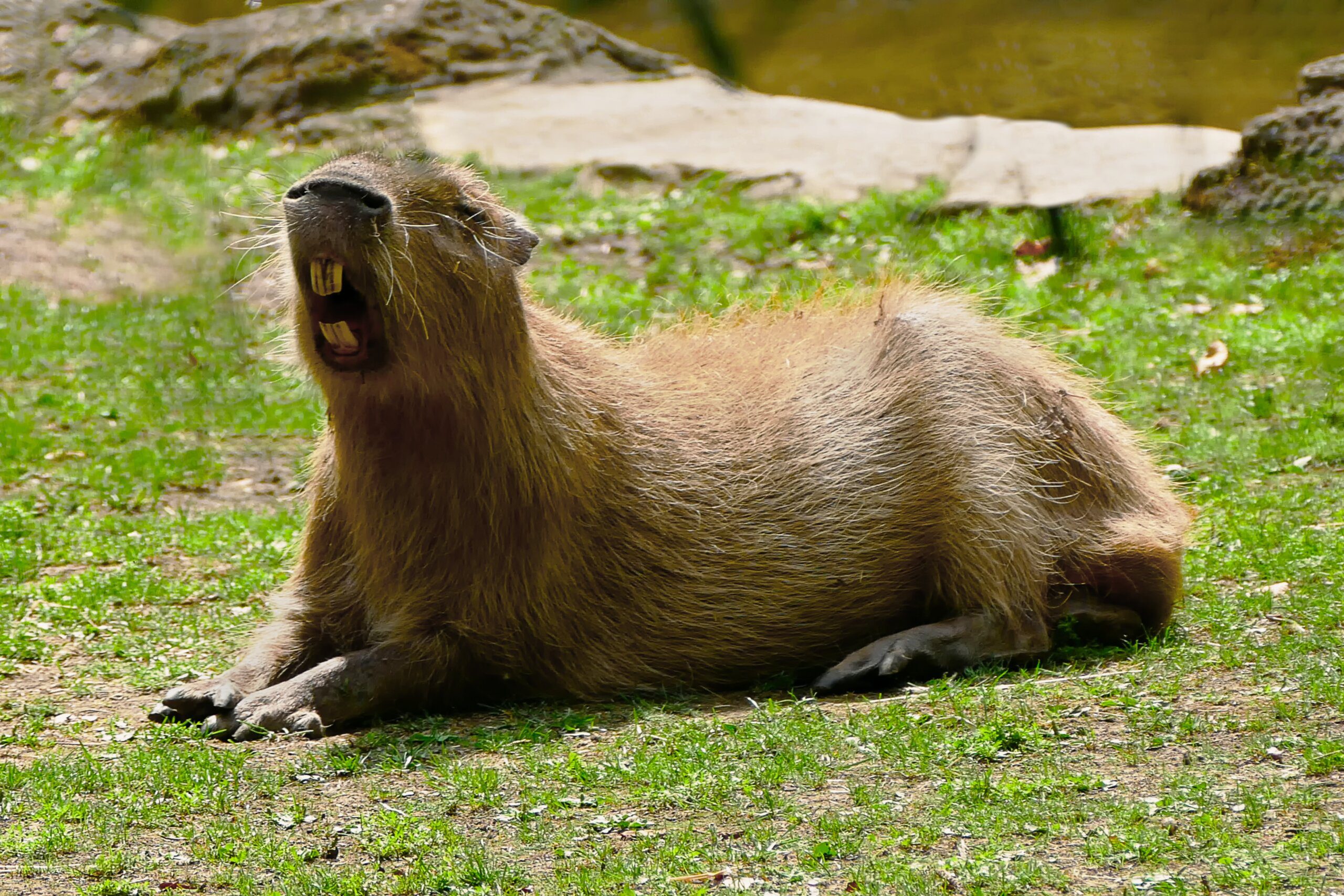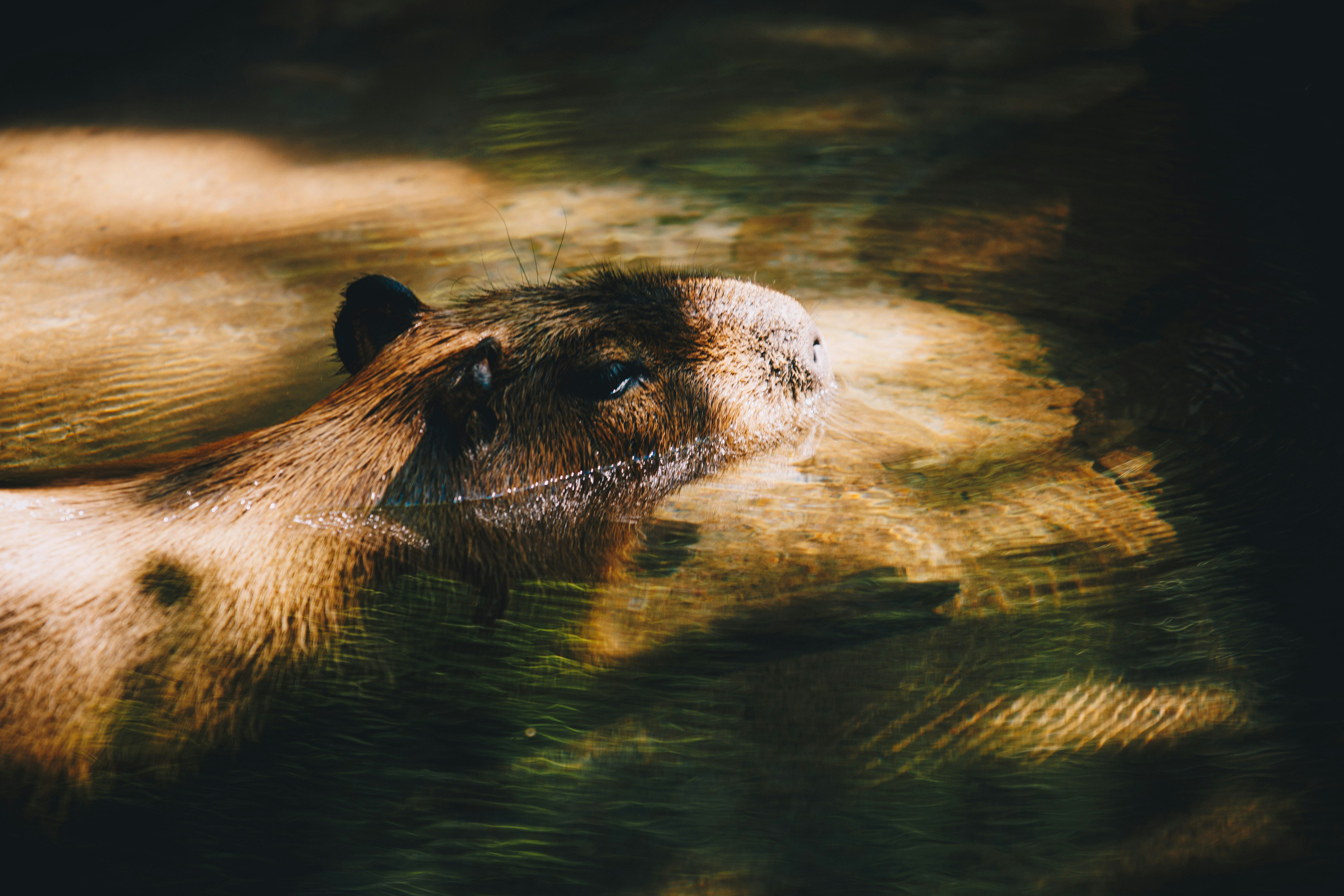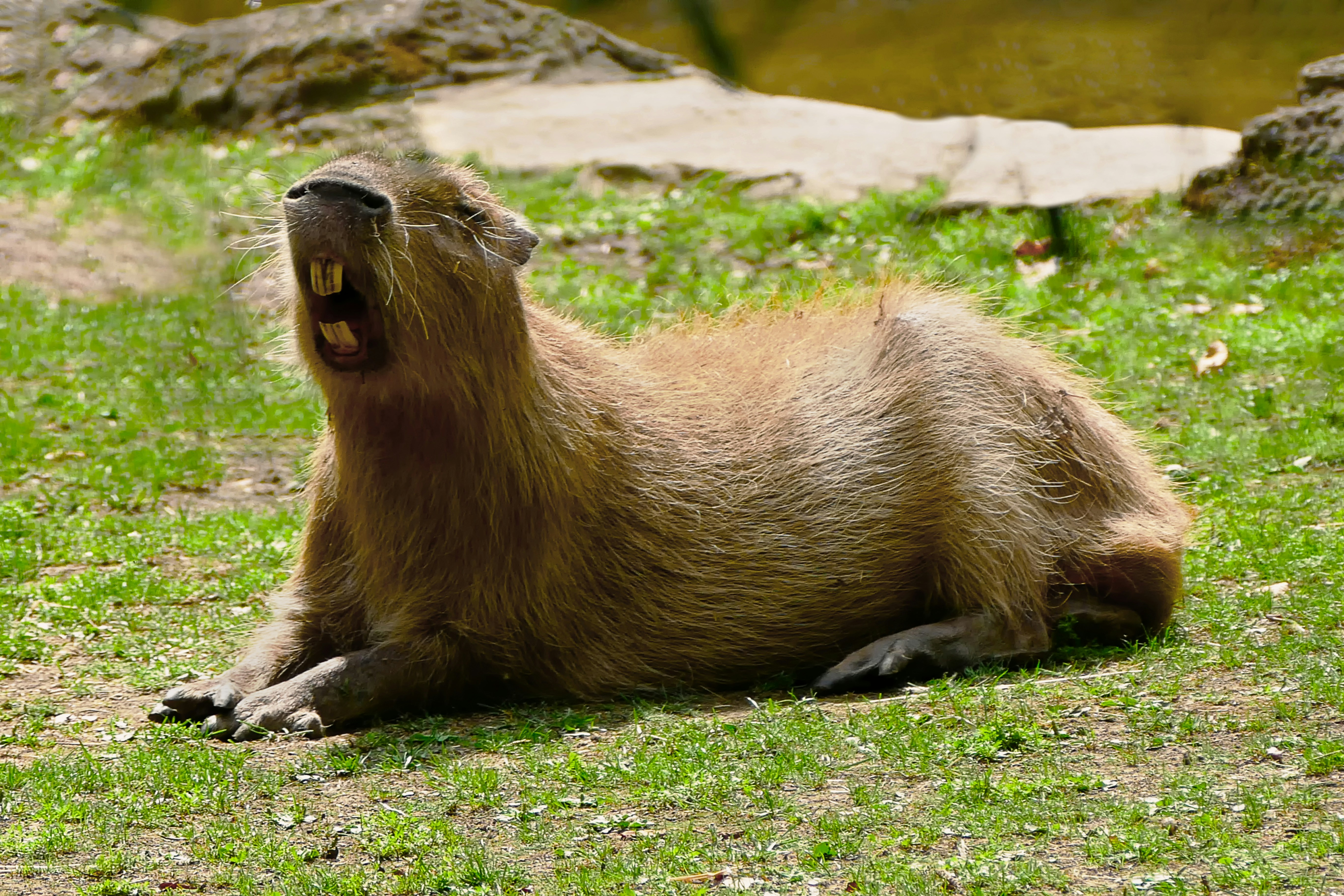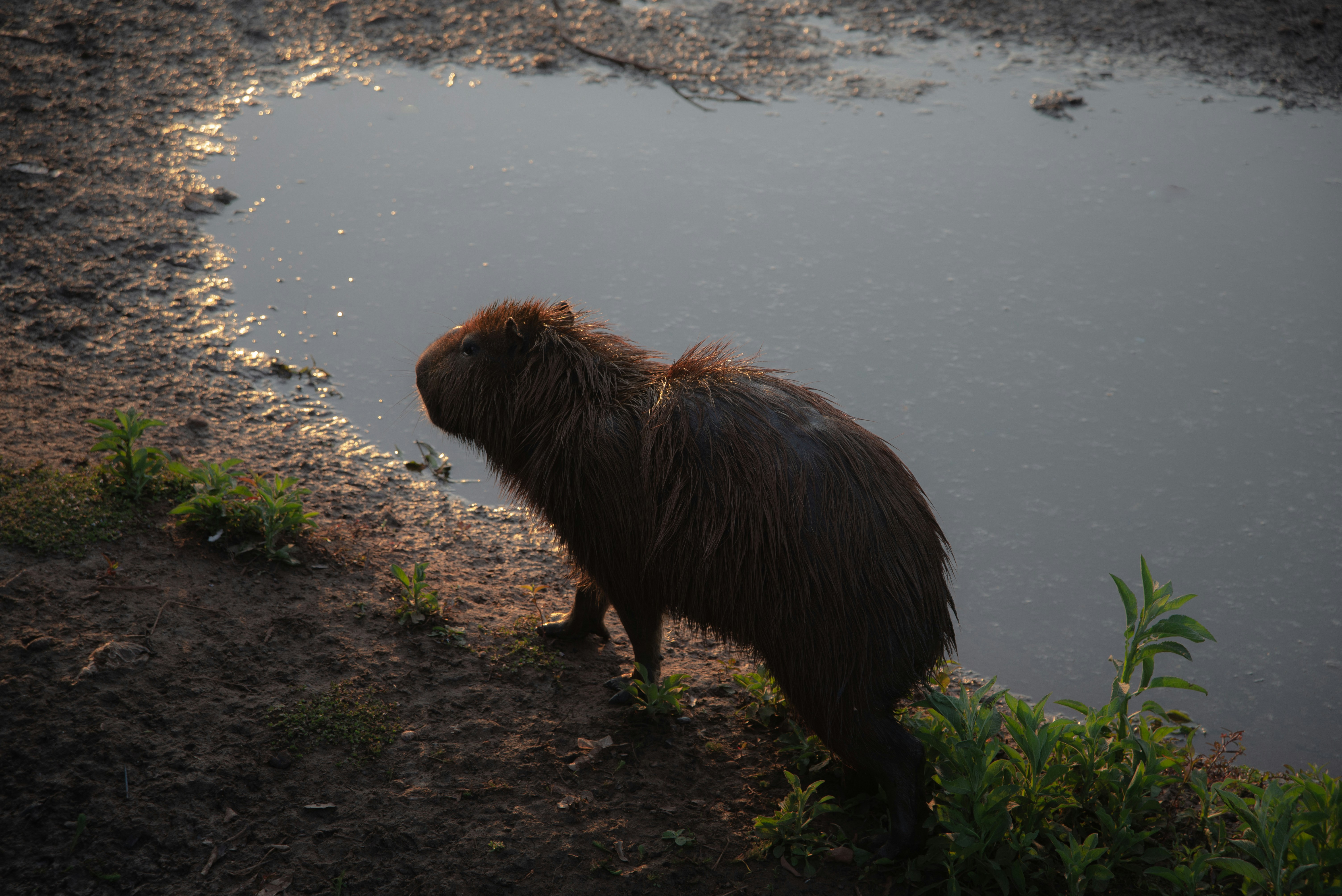Have you ever wondered about the connection between capybaras and guinea pigs? It turns out that these two adorable creatures are actually cousins! Despite their size difference, capybaras and guinea pigs share a close evolutionary relationship. In this article, we will explore the fascinating link between these cuddly animals and discover what makes them so similar yet so different. So, grab a cozy seat and let’s embark on a delightful journey into the intriguing world of capybaras and guinea pigs!
Physical Characteristics
Size
Capybaras are the largest rodents in the world, reaching lengths of up to 4 feet and weighing between 77 and 146 pounds. On the other hand, guinea pigs are much smaller, typically measuring around 8 to 10 inches in length and weighing between 1.5 and 2.5 pounds. Despite their size differences, both capybaras and guinea pigs share the common characteristic of having compact and sturdy bodies.
Body Shape
Capybaras have a stocky and robust body shape, with short legs and a barrel-shaped torso. They have webbed feet, specifically adapted for their semi-aquatic lifestyle. On the other hand, guinea pigs have a more compact and rounded body shape, with short legs and a slightly elongated torso. Their bodies are not as adapted for swimming as capybaras, but they are excellent runners and jumpers within the context of their small size.
Coat and Fur
The coats of capybaras and guinea pigs differ in their appearance and texture. Capybaras possess coarse and wiry hair, which provides them with protection and buoyancy in water. Their fur is typically a reddish-brown color, occasionally with lighter patches on their ventral side. Guinea pigs, on the other hand, have softer fur that comes in a wide range of colors and patterns. Their fur can be short or long, and some guinea pigs even have unique tufts of hair on their heads, known as “crest.”
Facial Features
Capybaras have a distinctive face with a blunt snout and large, dark eyes positioned on the sides of their head. Their ears are small and rounded, while their nostrils are located near the top of their muzzle, allowing them to breathe easily while partially submerged in water. Guinea pigs have a more compact and rounded head structure, with prominent eyes positioned on the front of their face. Their ears are larger in proportion to their head and tend to stand upright. Guinea pigs also have a shorter and wider snout compared to capybaras.
Taxonomy
Capybaras
Capybaras belong to the scientific family Hydrochoeridae, and their scientific name is Hydrochoerus hydrochaeris. They are classified under the order Rodentia, which consists of various mammal species characterized by their continuously growing incisor teeth and other rodent-specific adaptations.
Guinea Pigs
Guinea pigs, scientifically known as Cavia porcellus, are a part of the family Caviidae. Like capybaras, they also belong to the order Rodentia. Guinea pigs are further classified into the genus Cavia, which includes several species of small, herbivorous rodents.
Family Classification
Both capybaras and guinea pigs are classified within the same mammalian order and share certain physiological and anatomical characteristics. They belong to different families, with capybaras in the Hydrochoeridae family and guinea pigs in the Caviidae family. While they are taxonomically related at the order level, they are not part of the same family, indicating that they are not as closely related to each other as they are to their respective relatives within their own families.
Habitat and Distribution
Capybaras
Capybaras primarily inhabit South America, specifically the wetlands, marshes, and savannas of countries like Brazil, Venezuela, and Colombia. They are semiaquatic creatures and are often found near rivers, lakes, and ponds where they can easily access water for both drinking and swimming. Capybaras create burrows close to the water’s edge, providing them with a safe retreat.
Guinea Pigs
Guinea pigs are native to the Andean region of South America, including countries like Peru, Bolivia, and Ecuador. They are found in a variety of habitats, from grassy plains to mountainous areas. In the wild, guinea pigs often seek shelter in dense vegetation, such as thick grasses or shrubs, where they can hide from potential predators and find food sources.
Coexistence in the Wild
Although capybaras and guinea pigs are both native to South America, they generally occupy different habitats and have limited overlap in their distribution ranges. Capybaras prefer wetland areas, while guinea pigs are commonly found in more mountainous regions. Consequently, their chances of coexistence in the wild are relatively low, as they reside in distinct ecological niches.
Behavior and Social Structure
Capybaras
Capybaras are highly social animals and are known to live in large groups, called herds or groups, which can consist of 10 to 40 individuals. These groups are often led by a dominant male and consist of multiple females and their offspring. They have a hierarchical social structure, which helps maintain order within the group. Capybaras are also known for their affiliative behavior, as they frequently engage in grooming and vocalizations to reinforce social bonds.
Guinea Pigs
Similarly, guinea pigs are social creatures that thrive in the company of their own kind. In the wild, they form small groups consisting of 5 to 10 individuals, although they can also be found individually or in pairs. Within a guinea pig group, a hierarchy is established based on dominance, with the alpha male typically leading the group. Social interactions among guinea pigs include nose-touching, vocalizations, and grooming, which help maintain social cohesion.
Interactions and Communication
Both capybaras and guinea pigs rely on various forms of communication to interact with members of their social group and to establish social hierarchies. They communicate through vocalizations, such as whistles, chirps, and purring sounds. Additionally, body language, including postures and vocal cues, plays a crucial role in conveying social signals and maintaining social harmony within their groups.
Dietary Habits
Capybaras
Capybaras are herbivorous animals that mainly feed on grasses, aquatic plants, and small shrubs. Their diet consists mainly of fibrous vegetation, such as reeds and water hyacinths. Capybaras have specialized digestive systems that allow them to efficiently break down and extract nutrients from tough plant matter. Due to their semi-aquatic lifestyle, they also consume aquatic vegetation, such as water lilies and water lettuce.
Guinea Pigs
Guinea pigs have a similar herbivorous diet to capybaras, primarily consisting of grasses, leafy greens, and hay. They are unable to produce vitamin C naturally and, therefore, require a diet rich in sources of this essential nutrient, such as fresh fruits and vegetables. Guinea pigs have a specialized chewing pattern, known as “munching,” in which they vigorously grind their food to facilitate digestion.
Similarities in Diet
Both capybaras and guinea pigs are strict herbivores, relying exclusively on plant-based food sources. They share a preference for grasses and leafy vegetation, although capybaras have a broader diet due to their semi-aquatic nature. Additionally, like guinea pigs, capybaras may supplement their diet with fruits and roots when available.
Reproduction and Lifecycle
Capybaras
Capybaras have a reproductive system that is characterized by polygamy, in which one dominant male mates with multiple females within the group. Females typically give birth to litters of two to eight offspring, known as pups, after approximately 150 days of gestation. Capybara pups are relatively precocial and can walk and eat solid food shortly after birth. They are weaned at around three months of age but remain with their mother and the herd for several months before becoming sexually mature.
Guinea Pigs
Guinea pigs have a shorter gestation period compared to capybaras, lasting approximately 59 to 72 days. They give birth to litters averaging four pups, although larger litters are not uncommon. Guinea pig pups are born fully furred, with their eyes open, and are capable of moving around shortly after birth. They nurse from their mother and gradually transition to a solid food-based diet within a few weeks.
Breeding Patterns
While both capybaras and guinea pigs are known to have multiple offspring in each litter, capybaras have a longer gestation period and a more extended period of maternal care. Guinea pigs, on the other hand, have a shorter gestation period and are less dependent on maternal care, as their pups have a higher level of independence soon after birth.
Predators and Natural Threats
Capybaras
Capybaras are preyed upon by several predators in their native habitats. Among their natural predators are large felines, such as jaguars and pumas, as well as anacondas and caimans. Capybaras rely on their keen senses and their ability to escape into water bodies to avoid becoming prey. Additionally, their large herd sizes provide some level of protection against predators.
Guinea Pigs
In the wild, guinea pigs face various predators, including birds of prey, snakes, and small carnivorous mammals. Due to their smaller size, they are more vulnerable to predation. Guinea pigs primarily rely on their excellent sense of hearing and their ability to flee and find shelter in dense vegetation to evade predators.
Shared Vulnerabilities
Both capybaras and guinea pigs share vulnerabilities to predation due to their herbivorous nature and relatively small size compared to their predators. Additionally, habitat loss and fragmentation pose significant threats to their survival in the wild, often leading to increased vulnerability to predation and reduced access to food resources.
Domestication and Pet Ownership
Capybaras as Pets
Capybaras are not typically recommended as pets due to their unique care requirements and their semi-aquatic nature. They require a large outdoor space that includes access to water for swimming, as well as a spacious enclosure with appropriate substrate and vegetation. Furthermore, capybaras are social animals and thrive best when kept in a group or with other compatible animals. It is essential to consult with experts in capybara husbandry when considering them as pets.
Guinea Pigs as Pets
Guinea pigs are a popular choice as small pets due to their manageable size, relative low-maintenance care, and gentle disposition. They can be kept in indoor enclosures or outdoor hutches, provided they have ample space to move around and explore. Guinea pigs are social animals and should be kept in pairs or small groups to provide mental stimulation and companionship.
Compatibility and Coexistence
While capybaras and guinea pigs share common ancestry within the order Rodentia, they have distinct differences in terms of their size, habitat requirements, and social structure. Therefore, keeping these two species together as pets is not advised. Capybaras have specific needs and are best suited for a semi-aquatic habitat, while guinea pigs thrive in a more terrestrial setting. It is important to prioritize the welfare of individual animals and provide them with appropriate environments and companionship.
Interactions and Hybrids
Capybara-Guinea Pig Hybrids
Capybara-guinea pig hybrids, also known as capybara cavies, have been observed in captivity. These hybrids exhibit a combination of physical characteristics from both parent species, showcasing an intriguing blend of traits. While these hybrids are relatively rare, they serve as a testament to the genetic compatibility between capybaras and guinea pigs.
Observations in Captivity
In captive settings, keeping capybaras and guinea pigs together is not commonly practiced. However, there have been instances where they have been housed within the same area, albeit with adequate space and careful management to prevent any potential aggression or stress. It is essential to monitor the interactions between these two species closely and ensure the well-being of each individual.
Genetic Similarities
Capybaras and guinea pigs share genetic similarities stemming from their common ancestry within the order Rodentia. Despite their physical differences, their genetic makeup reflects their evolutionary relationship. The study of these genetic patterns further enhances our understanding of the evolutionary history and diversity within the rodent family.
Conservation Efforts
Capybaras
Capybaras are not currently considered endangered species. However, habitat loss and degradation due to human activities, such as deforestation and the conversion of wetlands for agriculture, pose significant threats to their populations. Conservation efforts focus on preserving their natural habitats, implementing sustainable land-use practices, and enforcing protective measures to maintain capybara populations at healthy levels.
Guinea Pigs
In their native habitats, guinea pigs are not recognized as endangered. Nevertheless, the loss of suitable habitats and predation from invasive species remain concerns. Additionally, guinea pigs are commonly bred and kept as pets worldwide, ensuring their continued presence and cultural significance.
Preservation of Habitat
Preserving the natural habitats of capybaras and guinea pigs is crucial for the conservation of these species. Habitat conservation efforts involve the protection and restoration of wetlands, grasslands, and forested areas. This includes the establishment of protected areas and the promotion of sustainable land-use practices to maintain ecological balance and ensure the long-term survival of capybaras, guinea pigs, and other wildlife species.






